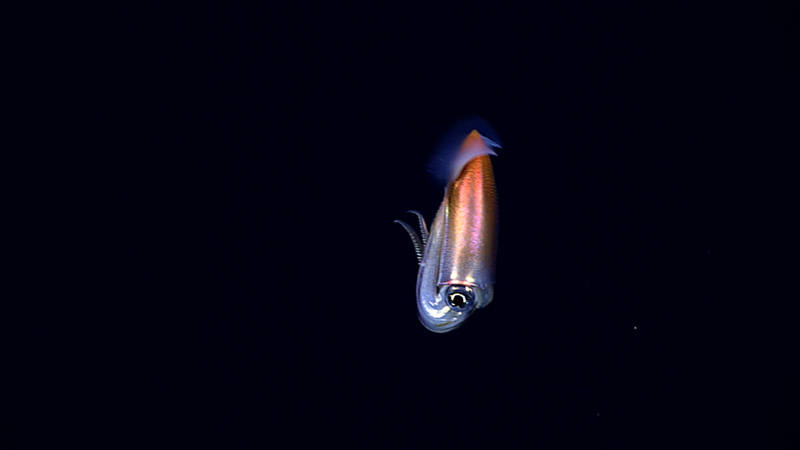Dive 17 was conducted just outside the boundaries of the Monument on a ridge that extends north of Gardner Pinnacles to survey a completely unexplored area for corals and sponges. In addition to surveying the seafloor, this dive also included the second mid-water transects of the expedition, exploring depths between 800-1,200 meters in order to examine the potential prey field for deep-diving toothed whales, as well as documenting other nekton and gelatinous megaplankton. The dive started at 2,065 meters on a wall consisting of manganese-crusted dike rock and rubble, with a sediment-free substrate overgrown by several fan-shaped bamboo corals. As the ROV moved up the flank of the ridge, the density of animals increased and included fan-shaped and unbranched corals. The substrate consisted of manganese-crusted pillows and rubble, which were free of sediment. Once the ROV reached the crest of the ridge, the substrate changed to hardpan, which was overgrown by fan-shaped and unbranched corals, mushroom corals and sponges. As the ROV moved northeastward along the crest of the ridge, it passed through several patches where the substrate consisted of smaller cobble, and there was a concomitant decrease in the density of animals. The ROV moved over to the northern end of the ridge and surveyed down the flank of the ridge, where the density of animals was moderate. The ROV then moved up towards the summit of the cone, before leaving the bottom at a depth of 1,980 meters after covering a linear distance of 890 meters. The ROV then ascended to 1,200 meters to commence the mid-water portion of the dive. Transects were conducted for 10 minutes each at 1,200 meters, 1,100 meters, 1,000 meters, 900 meters, 800 meters, and 550 meters, the latter being where the EK60 sonar showed the densest backscatter layer. A few animals were observed during the mid-water transects, including jellyfishes, ctenophores, siphonophores, shrimps, copepods, fishes, and a squid.
